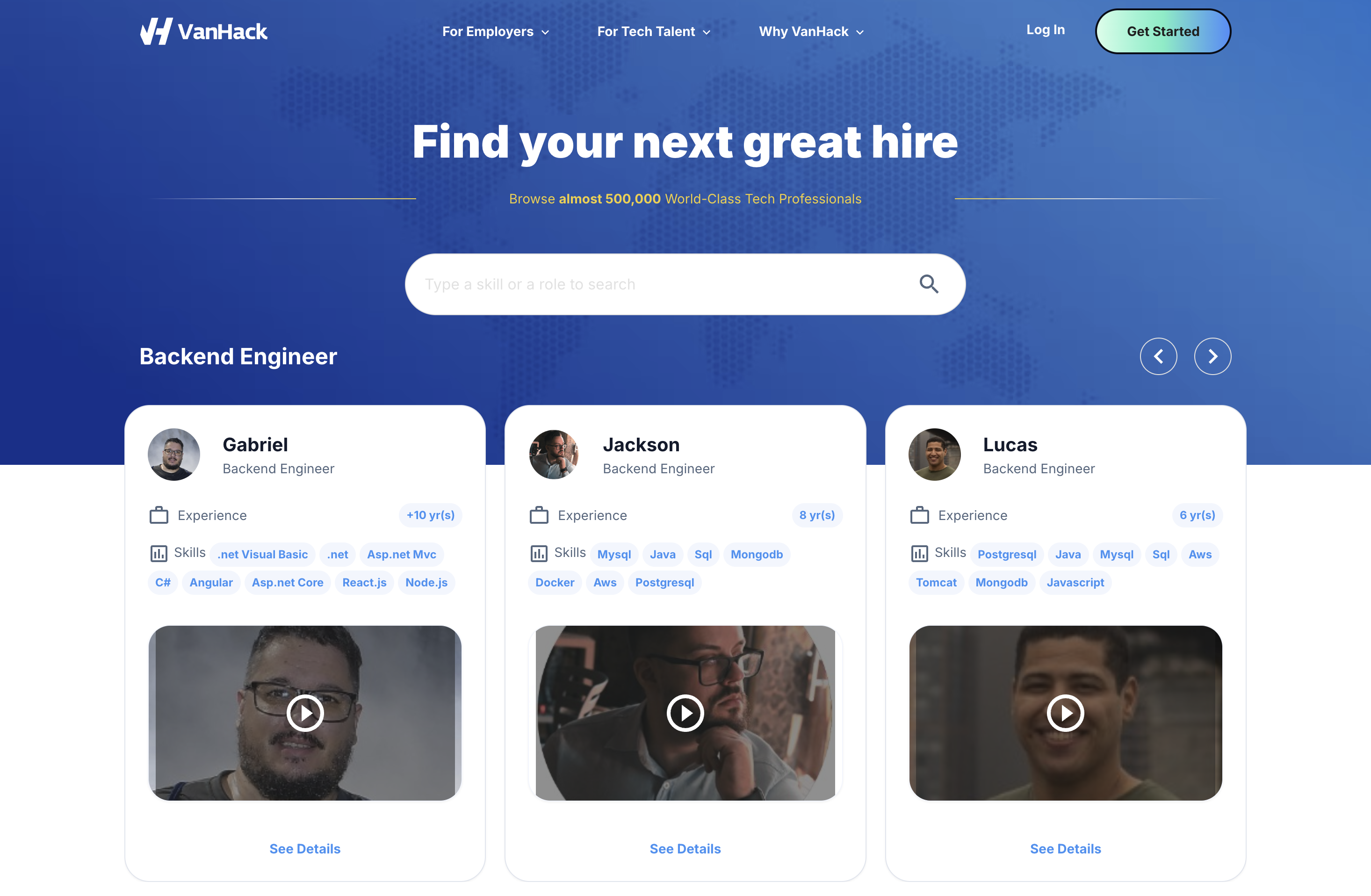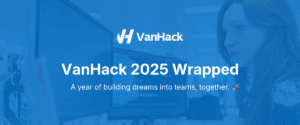Hiring top engineering talent is now a key driver for business growth, especially for US companies looking to scale with skilled remote developers from Latin America. This region offers a robust tech scene, cost-effective solutions, and close cultural ties. To succeed, you need a sharp skills assessment process that goes beyond resumes, focusing on technical expertise, communication, and cultural fit. This guide provides practical steps to build an effective assessment strategy for remote LATAM developer hires, helping you avoid costly hiring mistakes. Connect with qualified candidates quickly via VanHack.
Why Skills Assessment Matters for Remote LATAM Hires
Building a Strong Talent Strategy
Hiring for engineering roles is about more than filling spots. It’s about creating a team that supports your long-term goals. When hiring senior or principal developers remotely, especially from LATAM, you need to balance technical skills with clear communication and adaptability to your company’s culture.
An effective assessment process should cover three key areas: coding and technical knowledge, ability to communicate ideas across time zones, and alignment with your team’s values and remote work practices. This ensures candidates can deliver results and integrate well with your existing staff.
Understanding the Global Talent Market
Remote work has reshaped hiring, making Latin America a top choice for US firms due to its skilled developers, overlapping time zones, and shared cultural traits. The market includes major tech firms, fast-growing startups, consultancies, and platforms that connect companies directly with global talent.
With remote tools, AI-driven assessments, and shifting pay scales, companies have new ways to tap into this talent pool. Traditional methods like job boards or referrals often fall short for startups needing quick hires without sacrificing quality.
Avoiding the High Cost of Wrong Hires
A bad hire can be expensive, costing 3 to 5 times a developer’s yearly salary when you add up onboarding, lost productivity, and team disruption. For senior roles paying $100,000 to $150,000, that’s a potential loss of $300,000 to $750,000 per misstep.
Remote hires bring added risks like miscommunication, timezone issues, and cultural gaps that can affect entire teams. For startups, where every hire impacts product speed and market position, getting this right is critical.
Key Skills Assessment Methods for Remote Developers
Automated Technical Tests
Automated tools offer a scalable way to screen candidates with consistent, objective results. They efficiently test coding skills, problem-solving, and technical benchmarks across various languages.
While useful for filtering out unqualified candidates, these tools can miss deeper insights and sometimes flag good candidates incorrectly without human oversight. Pair them with manual reviews, set difficulty based on role level, and focus on job-relevant tasks for best results.
Take-Home Coding Challenges
Take-home projects mirror real job tasks, showing how candidates solve problems, manage time, and write code. They reveal practical skills and decision-making in a realistic setting. Also, they scale better than live sessions and let candidates work comfortably.
Keep projects tied to actual business needs, limit them to 2 to 4 hours, provide clear guidelines, and ask candidates to explain their choices for a full picture of their approach.
Live Coding and Pair Programming
Live coding sessions give direct insight into a candidate’s problem-solving and communication under pressure. They’re valuable for assessing collaboration and real-time thinking, though they demand more resources.
For LATAM hires, these sessions also help gauge English skills and technical clarity. Focus on practical issues, let candidates use familiar tools, and mimic team collaboration to simulate real work conditions.
System Design and Technical Interviews
For senior roles, system design tasks test a candidate’s ability to build scalable solutions and explain complex ideas. They highlight strategic thinking and leadership in handling big-picture challenges.
These evaluations show how candidates tackle unclear problems and weigh trade-offs, which is vital for roles requiring oversight and planning. Use scenarios relevant to your business to assess their fit.
Reviewing Portfolios and Contributions
Checking a candidate’s past work or open-source projects offers proof of their skills in action. This approach grounds hiring decisions in real evidence, not just potential.
Portfolios reveal coding standards and project completion skills, while open-source work shows teamwork and community involvement. Use these to understand a candidate’s interests and quality of output.
How to Build a Strong Assessment Process for LATAM Hires
Customizing Assessments by Role and Experience
Assessments must match the role’s level and focus. Consider seniority, urgency, and technical needs when designing evaluations. Junior hires may need tests on basics and learning potential, while senior roles call for focus on system design and leadership.
Frontend roles require checks on UI skills and frameworks, backend on databases and APIs, and full-stack on both plus deployment. Tailor each test to the job’s core demands.
Ensuring Fairness in Evaluations
A structured process with defined criteria helps maintain consistency and reduce bias. Use clear rubrics, involve varied team input, and regularly review standards for fairness.
Set specific skill levels for scoring, cover technical and soft skills, and hold calibration meetings to align evaluators. This keeps assessments objective across all candidates.
Adapting to Remote and Cross-Border Needs
Hiring LATAM developers means accounting for time zones, communication differences, and cultural factors. Use asynchronous tests to ease scheduling and live sessions to check real-time teamwork skills.
Focus on written and verbal communication, video presence, and technical English for remote roles. These elements ensure candidates can handle documentation and discussions effectively.
Testing Communication and Soft Skills
Video intros quickly show English ability and personal style without early live calls. They help gauge if a candidate fits a remote setup from the start.
Behavioral interviews dive into teamwork, problem-solving, and values alignment. For remote hires, assess independence, time management, and how they communicate in distributed teams.
Creating a Positive Candidate Journey
Keep assessments short, around 3 to 4 hours total, and focused on practical tasks. Provide clear instructions, timely feedback, and use follow-ups to confirm findings.
Communicate expectations upfront and share results, even if you don’t hire. This respects candidates’ time, boosts your reputation, and keeps doors open for future talent.
Modern Tools and VanHack’s Unique Approach
Advances in Assessment Tech
Today’s platforms go beyond basic tests with detailed evaluations. Tools like iMocha use AI to assess IT skills, coding, cognitive abilities, and interview performance. Additionally, they cover code quality, domain expertise, and behavioral fit for global hiring.
VanHack’s Thorough Vetting Process
VanHack stands out with a tailored vetting system for hiring remote LATAM talent for US firms. Their platform delivers pre-screened senior developers through advanced tools and efficient methods.

VanHack combines various assessments into a single candidate profile, giving hiring teams clear data on skills and communication. This saves time by centralizing key information for quick decisions.
Here’s what their platform offers:
- AI Matching Engine (Vanna): Uses an OpenAI model to match job needs with candidate profiles, delivering a shortlist of 3 to 5 top fits from a pool of over 500,000 professionals.
- Asynchronous AI Interviews: Through Ripples, offers 30-minute recorded sessions with an AI interviewer, providing videos, transcripts, and scores on technical answers for flexible review.
- Coding Tests and Video Intros: Includes standard coding challenges for measurable results and video intros to check English and communication early on.
Begin hiring with VanHack to streamline your LATAM developer search.
VanHack vs. Traditional Hiring Methods
|
Feature |
Traditional Methods |
Standard Tools |
VanHack’s Approach |
|
Initial Screening |
Manual, slow resume checks |
Basic automated filters |
AI matching, pre-vetted shortlist of 3 to 5 candidates |
|
Technical Evaluation |
Resumes, simple coding tasks |
Automated tests for correctness |
AI interviews with videos, transcripts, and scored coding tests |
|
Communication Skills |
Phone calls, subjective chats |
Limited, needs extra steps |
Video intros, AI interview insights on clarity |
|
Time to Hire |
Long, high dropout rates |
Slightly faster |
Faster with pre-screened talent |
Strategic Tips and Mistakes to Avoid
Deciding Between Building or Outsourcing Assessments
Companies must weigh whether to create their own assessment systems or partner with providers like VanHack. Building in-house demands heavy investment in tools and training, while partnerships offer quick access to tested methods and talent pools.
For startups, partnering often makes more sense due to speed and expertise, especially given the delays and legal hurdles of global hiring. Base your choice on hiring volume, budget, and priorities.
Measuring Assessment Success
Track multiple indicators to gauge your hiring process. Include screening, technical tasks, and final reviews with input from recruiters and managers at each step.
Look at hire quality through 90-day reviews, technical skills, and team fit. Monitor time to fill, offer acceptance rates, and retention to see if assessments predict long-term success.
Common Errors to Dodge
Avoid focusing on theoretical tests unrelated to real work, dragging assessments out too long, or ignoring cultural fit for pure technical scores. Many also set mismatched difficulty levels for remote roles.
Inconsistent scoring among evaluators can skew results. Plus, overlooking international hiring rules and cultural adjustments for LATAM talent can lead to bigger issues down the line.
Common Questions on Assessing Remote LATAM Developers
How Assessments Differ for Remote LATAM vs. Local Hires
Remote LATAM assessments place extra emphasis on English skills and written clarity. They also prioritize cultural fit with US teams, independence, time management, and familiarity with remote tools and timezone coordination.
Best Tools for Technical Skills Assessment
Combining methods works better than any single tool. Automated tests screen for basics, take-home tasks show real-world skills, live coding checks collaboration, AI interviews assess depth asynchronously, and portfolio reviews confirm past work. Match tools to role needs for efficiency.
Ideal Length for Senior Role Assessments
Keep total assessment time under 3 to 4 hours to respect candidates’ schedules. Break this into 1 to 2 hours for projects, 30 to 45 minutes for interviews, 30 minutes for AI tasks, and 15 to 30 minutes for intros or reviews. Balance thoroughness with speed to stay competitive.
Ensuring Fairness for International Candidates
Use structured rubrics with clear standards to limit bias. Include evaluators with global experience, hold regular reviews for consistency, share criteria upfront, avoid US-specific content, and offer varied test formats to support different styles.
Predicting Performance and Fit with Assessments
Well-crafted assessments can forecast technical success and team fit if they test relevant skills across multiple areas. Practical tasks predict job performance, while collaboration tests signal cultural match. Refine based on hire outcomes for better accuracy over time.
Cultural Fit in VanHack’s Process
VanHack includes video intros and AI interviews in their vetting to highlight communication and personality. Their profiles compile data to help assess how candidates might adapt to remote US team settings.
Wrapping Up: Hire Top LATAM Talent with Smart Assessments
Hiring remote LATAM developers requires a well-rounded skills assessment approach, combining technical checks, communication tests, and cultural evaluations. This ensures you find developers who excel and fit your team’s needs in a cross-border setup.
New assessment technologies, like AI matching and async interviews, make accessing global talent easier while upholding quality. Companies using these tools gain an edge in building strong engineering teams faster.
VanHack provides a focused vetting system with AI tools and detailed candidate insights, tailored for LATAM hires. Their process helps US firms grow their tech teams with confidence.
Hire top remote LATAM developers with VanHack today. Strengthen your team with proven strategies and access to skilled, pre-vetted professionals ready to contribute.



